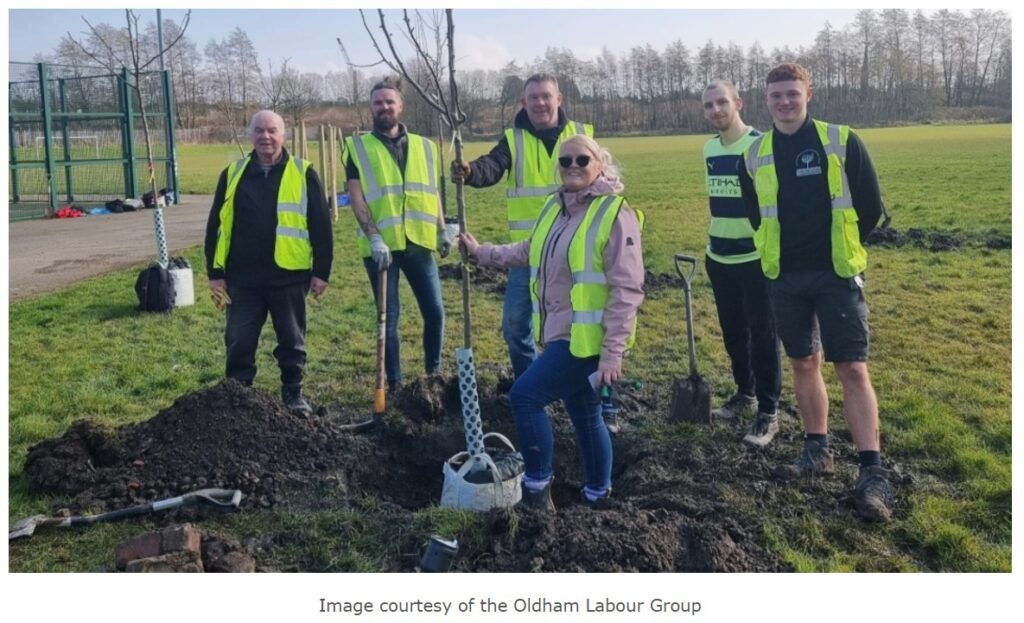Making Community Orchards work is blooming tough, and it helps if you start with the right size trees
We are in full armchair gardener mode on this one.
Granby Street in Chadderton, Greater Manchester, is bravely attempting a community orchard, the first of 4 planned in the area.
Community Orchards, like communities in general, are usually a struggle to organise, protect, and pass on. It is common for them to fall into neglect as soon as the first, passionate founding members are gone. That, of course, is no reason not to take on the challenge.
So, we have great respect for anyone attempting to make one, and we show that respect in the traditional manner by sitting on the sidelines eating snacks and criticising the people doing all the work.
Ignore for a moment the radiant, hard-working people in the picture below.
Can you see a problem with the trees they are planting? Look at where the branches start relative to people’s heads.

You guessed it: those are full standard size trees, meaning they have a clear trunk at least 160cm tall before they branch.
We’ve been in the selling fruit trees game for a while, and we know that gardeners like fruit trees with either a short trunk, known as a bush, or a slightly taller half-standard for something you can squeeze a mower under.
We don’t sell any full standard size fruit trees (only ornamental trees, which obviously don’t need to be harvested every year).
Why? Because bushes and half-standard trees give plenty of fruit on a tree you can manage from ground level.
Almost no one wants to grow a new fruit tree at home that will eventually give a bit more fruit, but is impossible to manage without ladders.
If they’d bought their trees at an appropriate size, they would have a double saving: the trees would have been cheaper, allowing more plants in the budget, and there would be no need in the future to invest in a proper orchard ladder that is safe to use in the field. And where to store that ladder?
Ah, but what if they chose that size for driving a ride on mower underneath? Nope, those trees are much better off being mulched, and the council and locals could dump suitable green waste there to keep it topped up.
But don’t go anywhere, we’re just getting comfy driving in the back seat here.
One way to manage the size of a fruit tree is as described above: start off with a short trunk that branches low down. Prune it into an Open Centre, upward pointing hand shape, the classic “bush” form, also called a goblet or vase.
The “opposite” or “upside down” of a bush, famously practised by Paul Gautschi, is to grow the tree with a tall, full standard height trunk, and prune the branches like the spines of an umbrella.
Paul has a serious injury that means he can’t climb any ladders, so the fruiting wood of his trees has to bow down under its own weight and come to him.
Pruning this way limits sap flow, which is a good thing in this context: the trees require less pruning over time to stay nicely compact and productive.
If you’ve ever seen a Bramley apple tree or a plum that was allowed to grow free with no brakes on its sap flow, you’ll know how out of control fruit trees can get.
